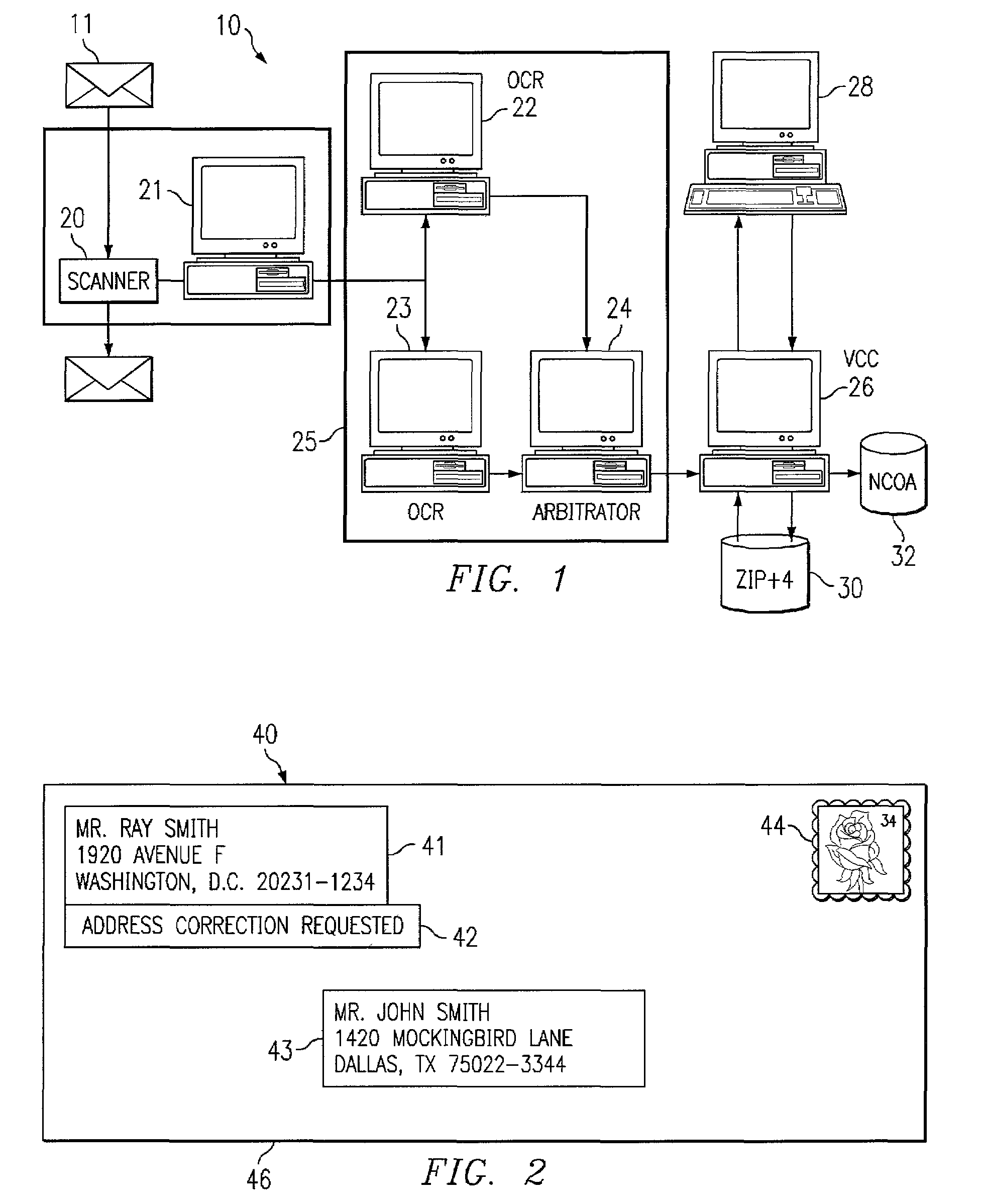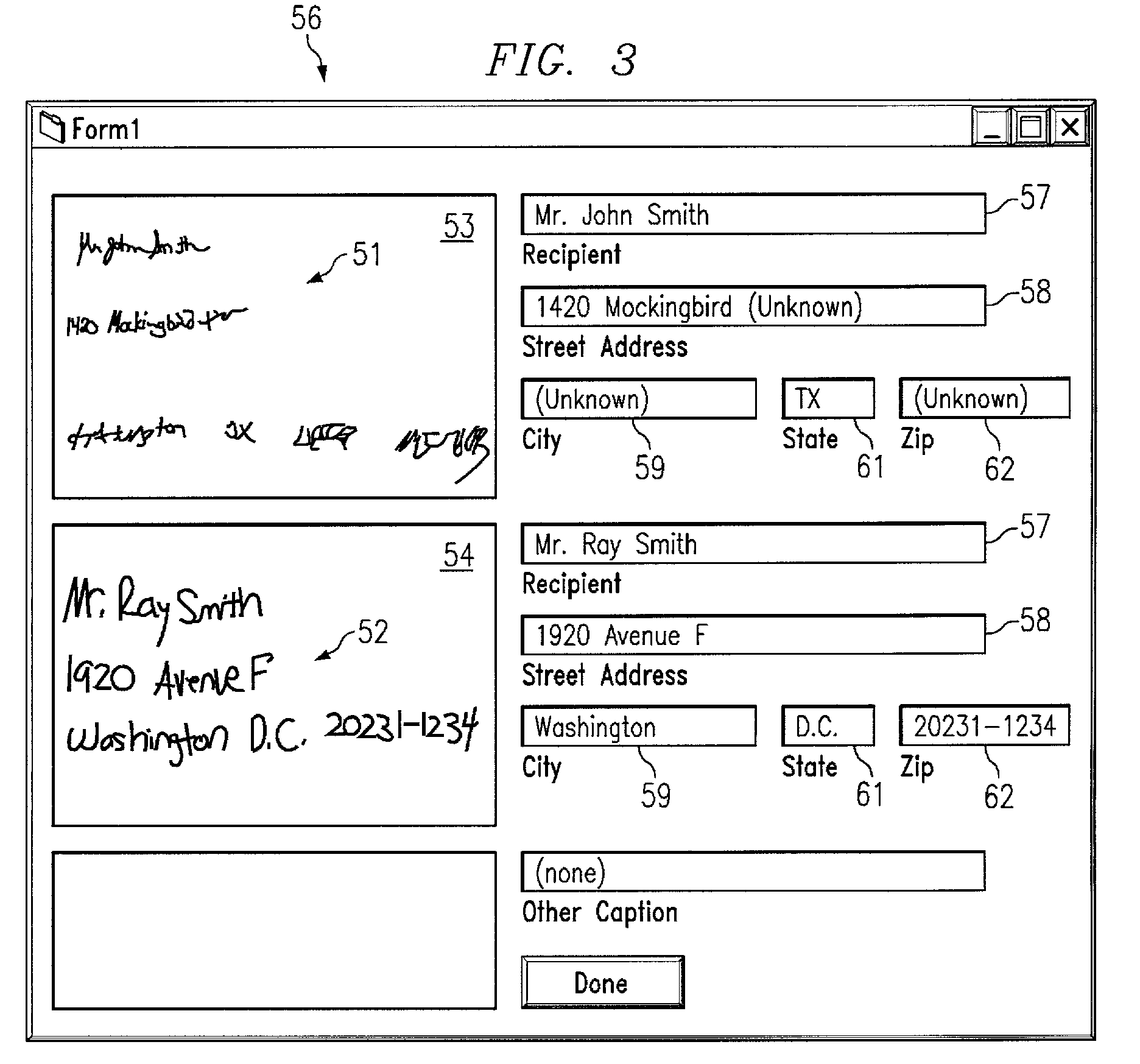Method and system for image processing
a technology of image processing and image data, applied in the field of manual, semi-automated and automated processing of images, can solve the problems of limiting the speed of the network, inhibiting the use of more data-intensive types of image formats, and large number of images transmitted through for processing per second
- Summary
- Abstract
- Description
- Claims
- Application Information
AI Technical Summary
Benefits of technology
Problems solved by technology
Method used
Image
Examples
Embodiment Construction
[0015]The present invention provides an apparatus and method for using sub-images or “snippets” in order to minimize the cost of image processing through network optimization as well as utilizing the snippets to produce the most highly optimized machine and operator interface possible, thereby maximizing the opportunity for an automated solution thru the use of optical character recognition (OCR), bar code readers (BCR), specialized video processing systems, image processing systems, forms readers, forms video processing, video coding systems and / or any combination thereof A “snippet” or sub-image for purposes of the invention is a segment or portion of a digitized image that has been identified and separated into identifiable data that may be transmitted electronically from one computer, processor or location to another. The snippet may then be processed individually or it may be logically associated with other snippets to reconstruct a facsimile of the original layout of the scann...
PUM
 Login to View More
Login to View More Abstract
Description
Claims
Application Information
 Login to View More
Login to View More - R&D
- Intellectual Property
- Life Sciences
- Materials
- Tech Scout
- Unparalleled Data Quality
- Higher Quality Content
- 60% Fewer Hallucinations
Browse by: Latest US Patents, China's latest patents, Technical Efficacy Thesaurus, Application Domain, Technology Topic, Popular Technical Reports.
© 2025 PatSnap. All rights reserved.Legal|Privacy policy|Modern Slavery Act Transparency Statement|Sitemap|About US| Contact US: help@patsnap.com



